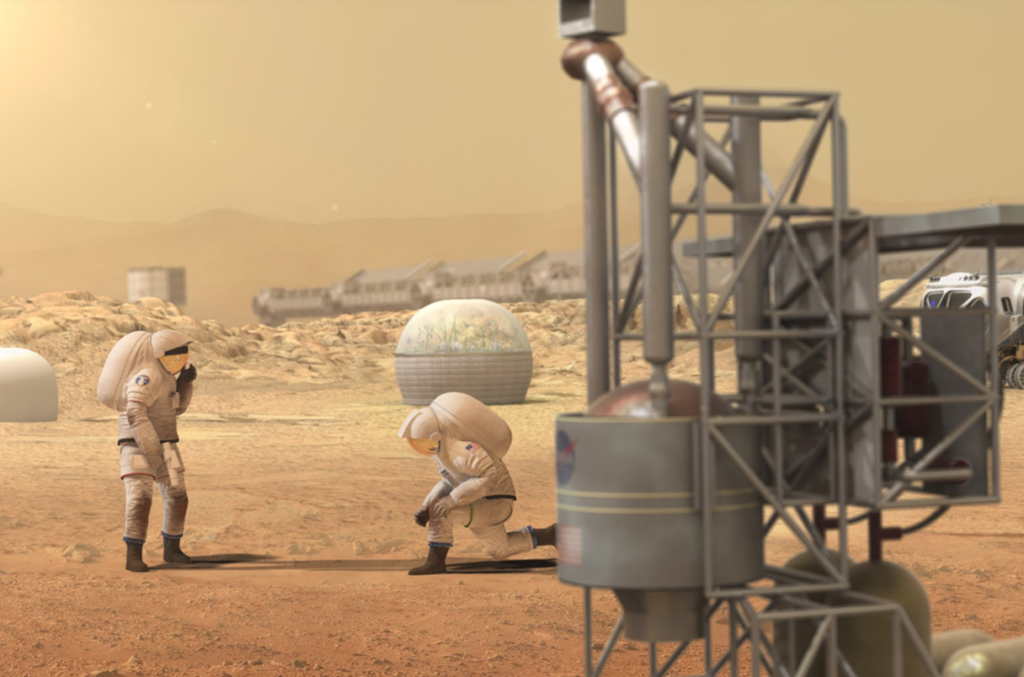

Space colonization within the solar system will heavily rely on the automation of tasks, employing robots and artificial intelligence in the construction of permanent bases capable of hosting numerous Homo sapiens. An example of this is evident in recent work on the mass production of oxygen on Mars using AI in chemistry.
Both Arthur Clarke and Isaac Asimov predicted that, in the 21st century, space exploration and colonization would occur predominantly with robots and artificial intelligence. Clarke, in particular, foresaw the World Wide Web as early as the 1960s, giving credence to his other predictions.
While lunar and space colonies following Gerard Kitchen O’Neill’s concepts capture the imagination, Martian colonies are especially intriguing. However, the journey to Mars and the establishment of a permanent base on the Red Planet are complex and initially expensive endeavors until a space industry, similar to O’Neill’s vision, is in place, with robotic exploitation of the Moon and asteroids.
One of the challenges for the first Martian colonists will be the need for oxygen to breathe. Fortunately, there are regions on Mars with water, and electrolysis (yielding gaseous dioxygen O2 and dihydrogen H2) using electric currents from solar panels is a feasible option. However, efficiency is crucial due to the lower intensity of Mars’ surface radiation compared to Earth or the Moon.
Catalysts Extracted from Martian Minerals

On Earth, electrodes with catalysts are used to reduce the electrical energy required for oxygen production. Importing catalysts from Earth, however, is costly. Researchers at the University of Science and Technology of China explored the possibility of producing efficient catalysts from Martian soil using artificial intelligence.
Samples from various Martian meteorites were analyzed for their chemical composition using laser-induced breakdown spectroscopy (LIBS). The researchers employed artificial intelligence techniques to process this data. The AI performed simulations of quantum chemistry and molecular dynamics for 30,000 possible mixtures of metal hydroxides derived from Martian soil.
AI Accelerating Research

The AI then analyzed these simulations and potential results regarding the efficiency of a catalyst produced from these mixtures. Neural networks were utilized to predict the properties of a given mixture of metal hydroxides more effectively. Real tests confirmed the discovery of viable catalysts, with the oxygen-producing electrolysis reaction efficiently occurring at average Martian temperatures of about -37 °C for at least one of these catalysts.
What is particularly remarkable is the speed at which the AI-driven research operations were completed – just two months. This stands in stark contrast to the estimated 2,000 years a human chemist would have needed to conduct similar experiments and achieve the same results.
In summary, artificial intelligence is playing a pivotal role in advancing research for Martian colonization, offering efficient solutions to complex challenges.
Related Content
- Artificial Hanging Plants Hanging Bamboo Leaves Vine Turtle Leaf Plant Lucky Bamboo Christmas Autumn Party Home Wall Decoration
- Autumn Beautiful Artificial Flowers
- Ten + 1 Initiatives That Make Valencia the Greenest City in Europe!
- Microsoft is overhauling the cybersecurity of its cloud services with AI power
- AI-Enabled Mobile Health App for Empowering LMIC s
- Top tech firms to let governments vet AI tools, Sunak says at safety summit
- Martian colonists will be able to breathe massive amounts of oxygen thanks to artificial intelligence – Archyde
- A Robotic ‘A.I. Chemist’ Could Make Oxygen on Mars | Smart News| Smithsonian Magazine
